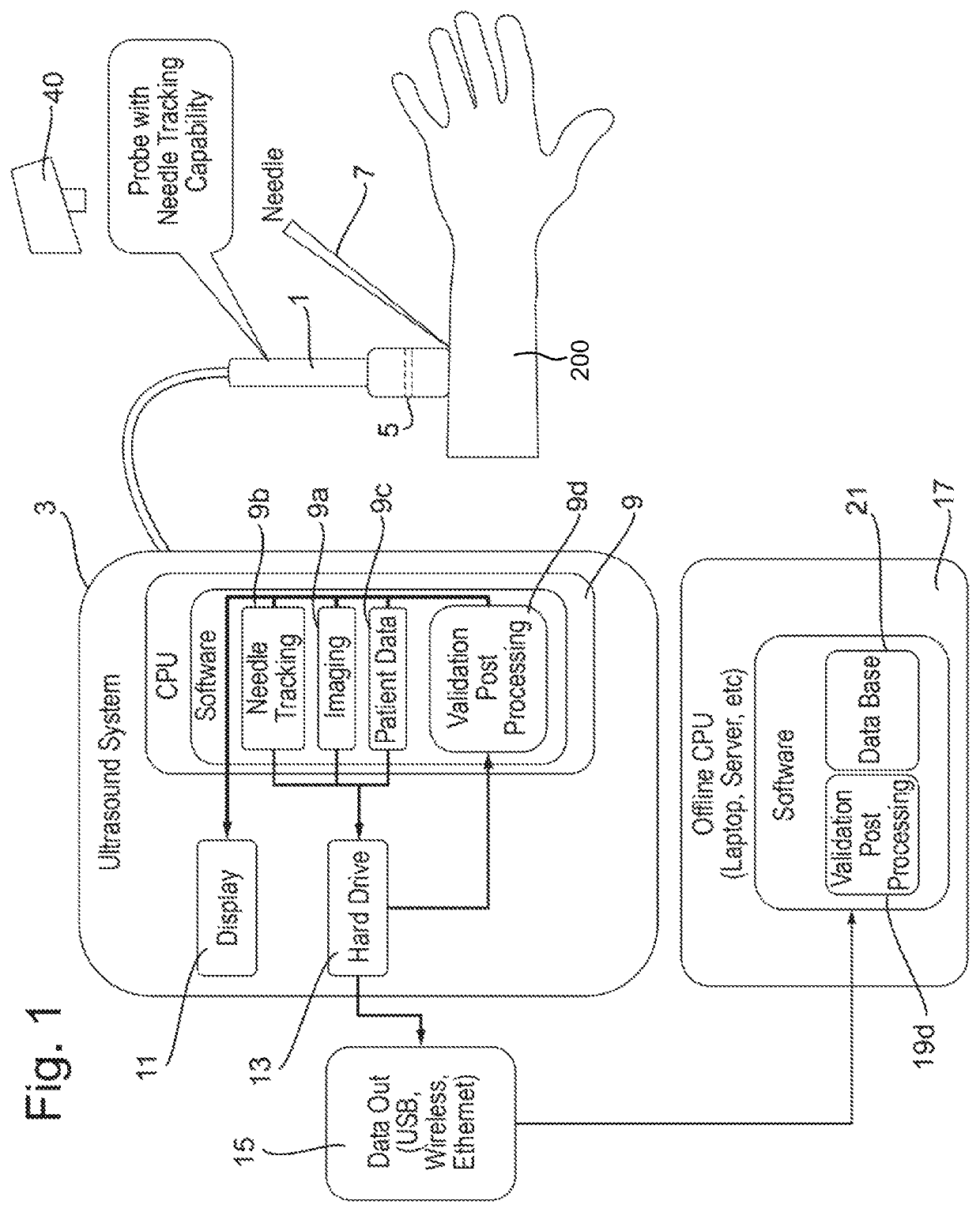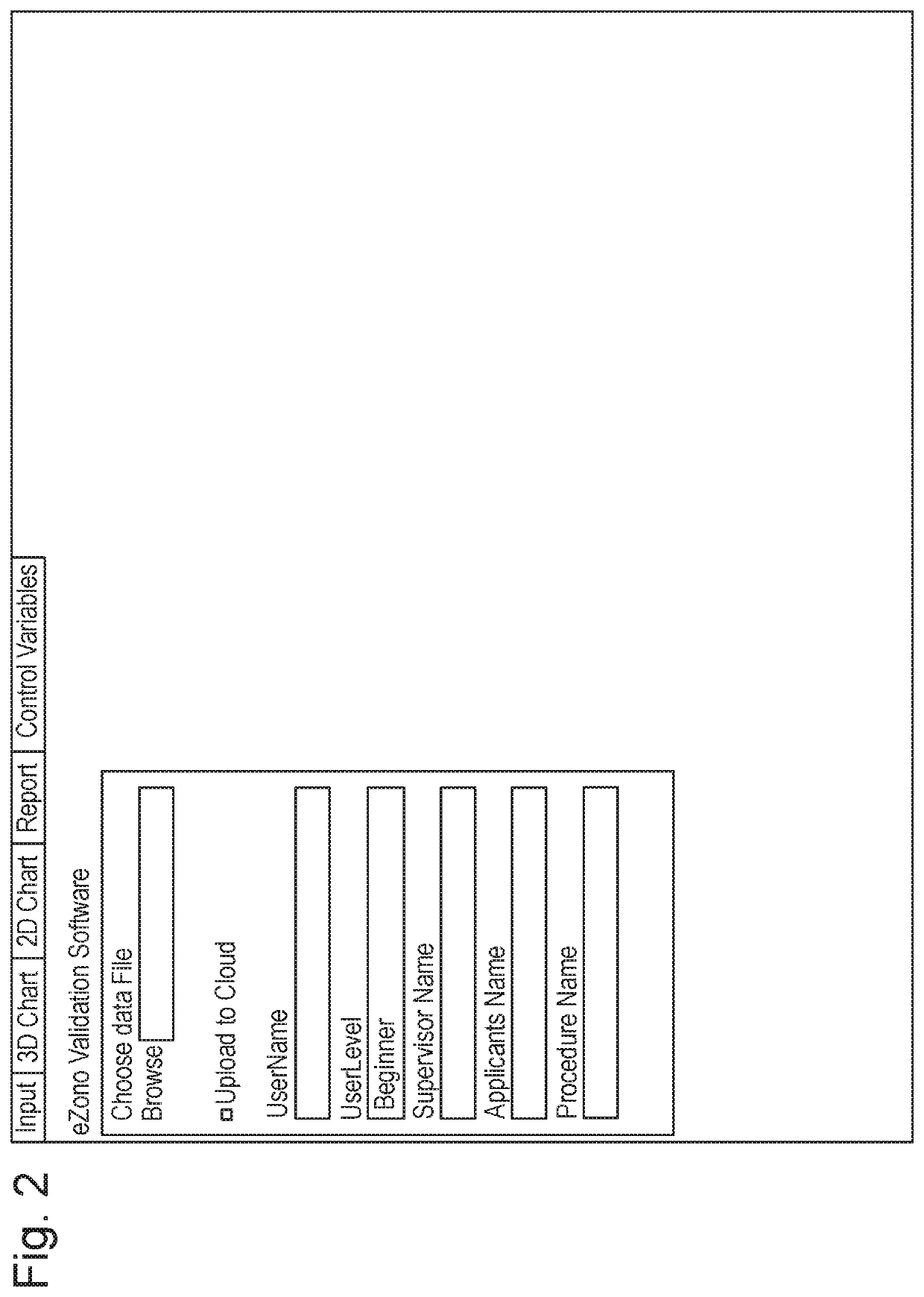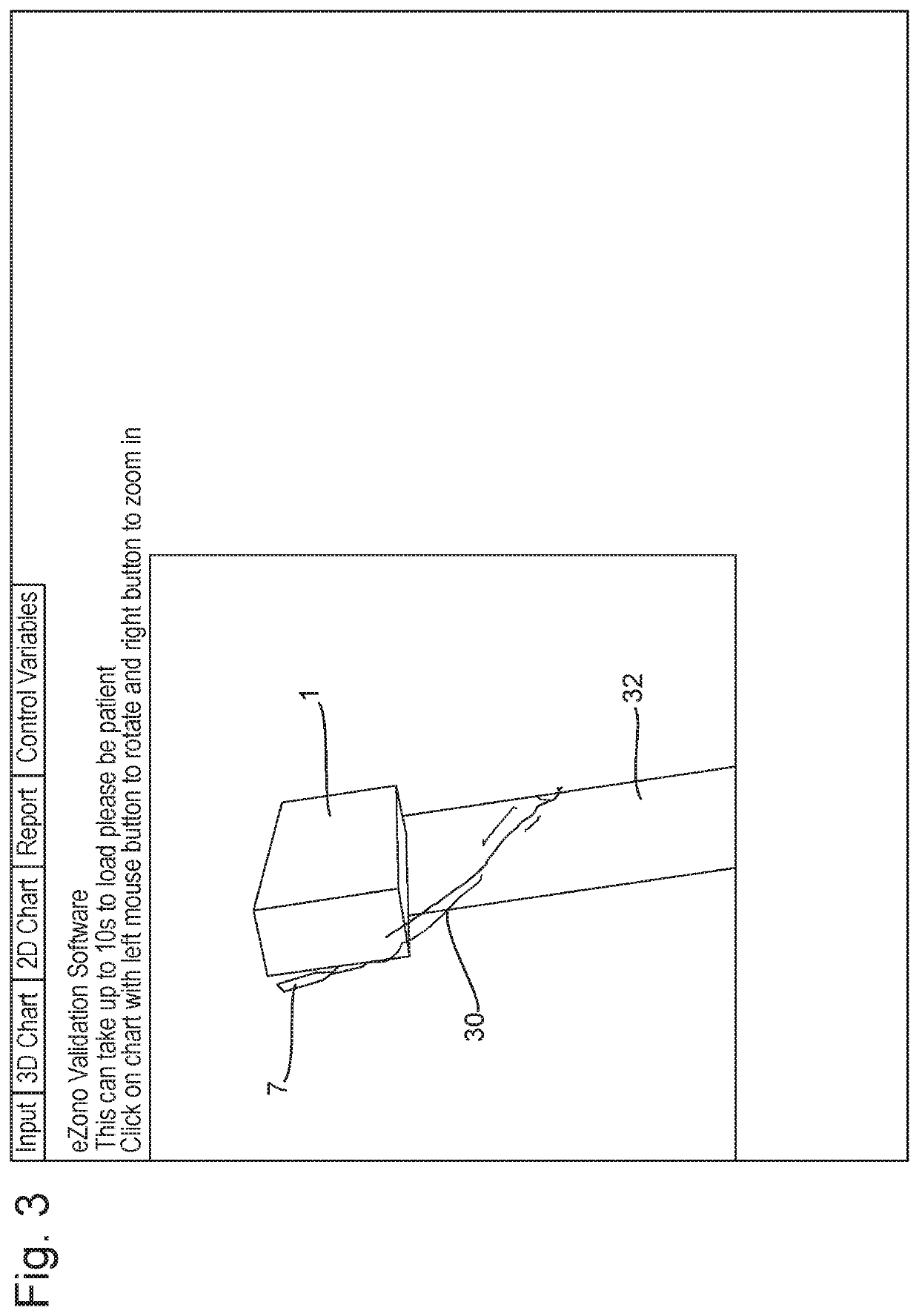System and method for image-guided procedure analysis and training
a technology of image-guided procedures and training methods, applied in the field of system and method of image-guided procedure analysis and training, can solve the problems of increasing patient risk in these procedures, not decreasing, and unable to determine the exact position of the tip of the interventional instrumen
- Summary
- Abstract
- Description
- Claims
- Application Information
AI Technical Summary
Benefits of technology
Problems solved by technology
Method used
Image
Examples
Embodiment Construction
[0043]FIG. 1 schematically illustrates an embodiment of the invention applied to an ultrasound image-guided procedure using a system combining ultrasound imaging and magnetic tracking, such as disclosed by WO-A1-2013 / 034175 (eZono AG). As illustrated in FIG. 1, the imaging system comprises a freehand ultrasound imaging probe 1 which is controlled by and supplies ultrasound data to a combined ultrasound and position detection system 3. The ultrasound imaging probe 1 also includes a plurality of magnetic field detectors in a magnetic detector array 5 which detect the magnetic field from the interventional instrument 7 (in this case a magnetised needle), and supply magnetic field measurements to the combined ultrasound and position detection system 3.
[0044]The combined ultrasound and position detection system 3 includes a data processor 9, display 11 and data store 13 (which may be in the form of a disk drive or solid state hard drive). It optionally also includes a data output 15 (suc...
PUM
 Login to View More
Login to View More Abstract
Description
Claims
Application Information
 Login to View More
Login to View More - R&D
- Intellectual Property
- Life Sciences
- Materials
- Tech Scout
- Unparalleled Data Quality
- Higher Quality Content
- 60% Fewer Hallucinations
Browse by: Latest US Patents, China's latest patents, Technical Efficacy Thesaurus, Application Domain, Technology Topic, Popular Technical Reports.
© 2025 PatSnap. All rights reserved.Legal|Privacy policy|Modern Slavery Act Transparency Statement|Sitemap|About US| Contact US: help@patsnap.com



